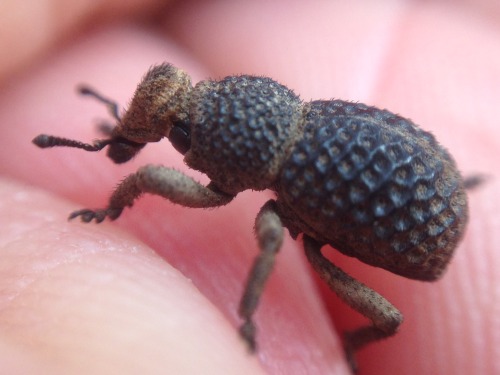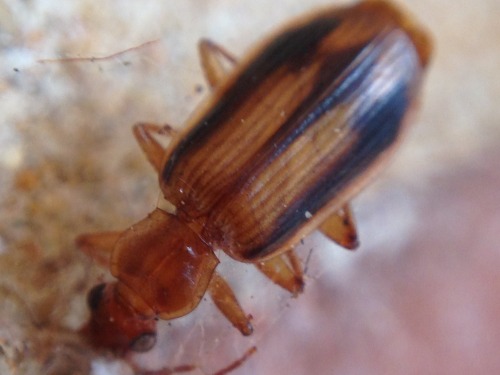#1710 -1714 - A Gumhopper and Some Beetles
#1710 - Eurymeloides pulchra nymphs


The rather colourful nymphs of a common Gum-leafhopper species. The Eurymelinae used to be their own family, but got demoted to a subfamily of the Cicadellidae. Most of them feed on Eucalypts, and some on Casuarina, but they’re only found in Australia and nearby areas.
They lay their eggs in slits cut into twigs, and have five molts between egg and adult. Many species are farmed for honeydew by meat ants (Iridomyrmex sp.), and they produce so much honeydew that Sooty Mold (Fumago vagans) can be a real problem on heavily infested trees.
Busselton, SW Australia
#1711 - Colymbomorpha vittata - Spring Beetle



Small Melolonthine scarabs that emerge in great numbers in the Spring here in SW WA. Only found from Perth to Albany, but when they do show up you’ll find them on a wide range of plants. They can be a problem in truffle plantations, because they can defoliate young trees.
The antennae are flabellate, with long blades, but are tucked away out of sight on this individual.
#1712 - Rhinoplethes foveatus


I found this one (and 5 more on the same bush the next day) on the Yallingup trip with the Naturalist’s Club, but I’m quite dismayed I haven’t discussed them before - because this isn’t the first time I’ve seen one of these delightful little weevils. The last time was while I was at a wargaming tournament in Albany.
They’re not often recorded, despite the distinctive inflated nose, heavily pitted armour, and black button-eyes tucked down near the shoulder. In fact, I had to get the ID from a weevil expert in Germany.
Another interesting fact, based on the handful of sightings recorded for the species, is that the foodplant appears to be Hakea - certainly, only one of the 6 sightings was on anything else.
Females are roughly twice the size of this one, but similar in appearance.
#1713 - Cossonine Weevil

A beetle from one of the smaller weevil subfamilies - a mere 1700 known species. Similar in appearance and habits to the Molytinae, another, possibly related, weevil group. Most Cossonines live among dead plant material, including wood and driftwood. I was finding this one among the dead skirt of Kingia and Xanthorrhea.
They don’t seem to have any species of economic importance, but their nibbling at scars on decidous trees may introduce rot-causing organisms. Hexarthrum ulkei can cause damage to finished woodwork, resembling that caused by powder-post beetles (Anobiidae and Lyctidae). Pselactus spadix has been found in pilings and in damp woodwork under buildings. Euophryum confine, the New Zealand Wood Weevil, has become somewhat notorious after it spread to the UK and much of the rest of the world, where it can chew out large galleries under bark, or in timber infected with Coniphora puteana fungus and other rot-producing agents. They will also attack wood that has since dried out, processed and discarded timber, moldy paper and cardboard, plywood, and so on. Large numbers can emerge simultaneously each year, but the adults appear to be quite long-lived, for beetles, and can be found in any season.
#1714 - Fam. Carabidae - Ground Beetle


An unfortunate tiny ground beetle that fell afoul of the cribellate silk of the Wall Spiders at Yallingup - even if it kept the spiders at bay with chemical defences, it would soon have been hopelessly entangled.